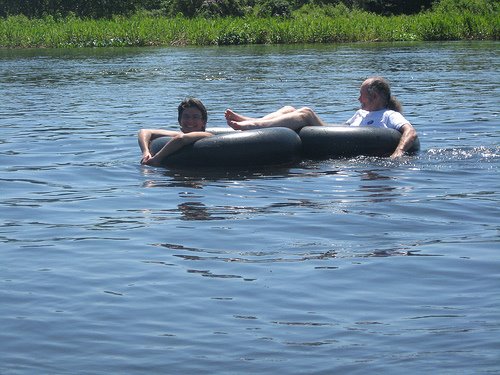 Tinkus is an indigenous style dance, developed from the tinkus custom in which two villages would fight each other until someone died, as a sacrafice to Mother Earth, or Pachamama. Today it´s still done, but only until someone sheds blood. At a tinkus party in Cochabamba on Saturday, two people lost an eye each. Despite its gory history, tinkus is my favorite dance on account of the brightly colored traditional costumes.
Tinkus is an indigenous style dance, developed from the tinkus custom in which two villages would fight each other until someone died, as a sacrafice to Mother Earth, or Pachamama. Today it´s still done, but only until someone sheds blood. At a tinkus party in Cochabamba on Saturday, two people lost an eye each. Despite its gory history, tinkus is my favorite dance on account of the brightly colored traditional costumes.Caporales: The men in this dance wear big boots with bells on the outsides, huge puffy sleeves, and some of them carry whips.
 They represent Spanish overseers. Other dancers repreent African slaves, and their grotesque masks represent the fatigue, suffering and altitude sickness that they experienced in Bolivian mines. The women in this dance wear very short skirts and high heels, and I don´t know what they represent.
They represent Spanish overseers. Other dancers repreent African slaves, and their grotesque masks represent the fatigue, suffering and altitude sickness that they experienced in Bolivian mines. The women in this dance wear very short skirts and high heels, and I don´t know what they represent.
 La Morenada: The men in this dance wear outfits that I used to think look like wedding cakes until someone told me that they represent the Spaniards in their armor with big beards and pipes. They spin a noisemaker, sometimes made from a dead armadillo, that makes a rattling noice, representing the chains on the people they enslaved.
La Morenada: The men in this dance wear outfits that I used to think look like wedding cakes until someone told me that they represent the Spaniards in their armor with big beards and pipes. They spin a noisemaker, sometimes made from a dead armadillo, that makes a rattling noice, representing the chains on the people they enslaved.
The Tobas represent jungle tribes conquered by the Incas, and they perform war dances with large tropical feathers on their heads and carrying lances.

La Diablada originates in 12th century Spain and represents a struggle between the Archangel Michael and the devil. There are lots of wild looking devil costumes, and some sexy women dancers representing carnal temptresses. The condor and the bear, ancient Andean symbols, are also part of this dance.

Another dance was performed by Afro Bolivians from the Yungas. These dancers are probably the descendents of slaves who were brought to work in the Potosí silver mines in Bolivia. They couldn´t survive at Potosi´s altitude, over 12,000 feet, and they were moved to the yungas (Coroico area, where Harald did his run) to work on coca plantations.
Other dances seemed more traditionally indigenous, but I don´t know their meanings.





In all, there were more than 90 dance groups. I took a lot of pictures (available at flickr.com/photos/kimigary), although I kept my camera in a plastic bag on account of all the water balloons and foam being sprayed.

Later in the day, huge water fights broke out between spectators on opposite sides of the street. I only got directly hit once, and Gary wasn´t hit. I took some pictures of the kids´water fight, but when adults joined in I didn´t dare take out my camera. We left after watching carnaval for ten hours, and it continued on into the night.

No comments:
Post a Comment